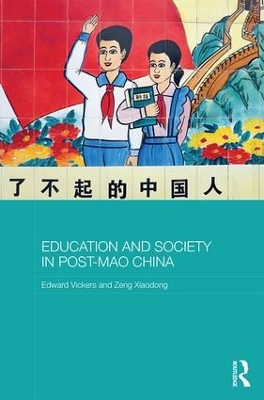Routledge Studies in Education and Society in Asia
2 total works
In many non-Western contexts, modernization has tended to be equated with Westernization, and hence with an abandonment of authentic indigenous identities and values. This is evident in the recent history of many Asian societies, where efforts to modernize - spurred on by the spectre of foreign domination - have often been accompanied by determined attempts to stamp national variants of modernity with the brand of local authenticity: 'Asian values', 'Chinese characteristics', a Japanese cultural 'essence' and so forth. Highlighting (or exaggerating) associations between the more unsettling consequences of modernization and alien influence has thus formed part of a strategy whereby elites in many Asian societies have sought to construct new forms of legitimacy for old patterns of dominance over the masses. The apparatus of modern systems of mass education, often inherited from colonial rulers, has been just one instrument in such campaigns of state legitimation.
This book presents analyses of a range of contemporary projects of citizenship formation across Asia in order to identify those issues and concerns most central to Asian debates over the construction of modern identities. Its main focus is on schooling, but also examines other vehicles for citizenship-formation, such as museums and the internet; the role of religion (in particular Islam) in debates over citizenship and identity in certain Asian societies; and the relationship between state-centred identity discourses and the experience of increasingly 'globalized' elites.
With chapters from an international team of contributors, this interdisciplinary volume will appeal to students and scholars of Asian culture and society, Asian education, comparative education and citizenship.
The post-Mao period has witnessed rapid social and economic transformation in all walks of Chinese life – much of it fuelled by, or reflected in, changes to the country’s education system. This book analyses the development of that system since the abandonment of radical Maoism and the inauguration of ‘Reform and Opening’ in the late 1970s.
The principal focus is on formal education in schools and conventional institutions of tertiary education, but there is also some discussion of preschools, vocational training, and learning in non-formal contexts. The book begins with a discussion of the historical and comparative context for evaluating China’s educational ‘achievements’, followed by an extensive discussion of the key transitions in education policymaking during the ‘Reform and Opening’ period. This informs the subsequent examination of changes affecting the different phases of education from preschool to tertiary level. There are also chapters dealing specifically with the financing and administration of schooling, curriculum development, the public examinations system, the teaching profession, the phenomenon of marketisation, and the ‘international dimension’ of Chinese education. The book concludes with an assessment of the social consequences of educational change in the post-Mao era and a critical discussion of the recent fashion in certain Western countries for hailing China as an educational model. The analysis is supported by a wealth of sources – primary and secondary, textual and statistical – and is informed by both authors’ wide-ranging experience of Chinese education.
As the first monograph on China's educational development during the forty years of the post-Mao era, this book will be essential reading for all those seeking to understand the world’s largest education system. It will also be crucial reference for educational comparativists, and for scholars from various disciplinary backgrounds researching contemporary Chinese society.

